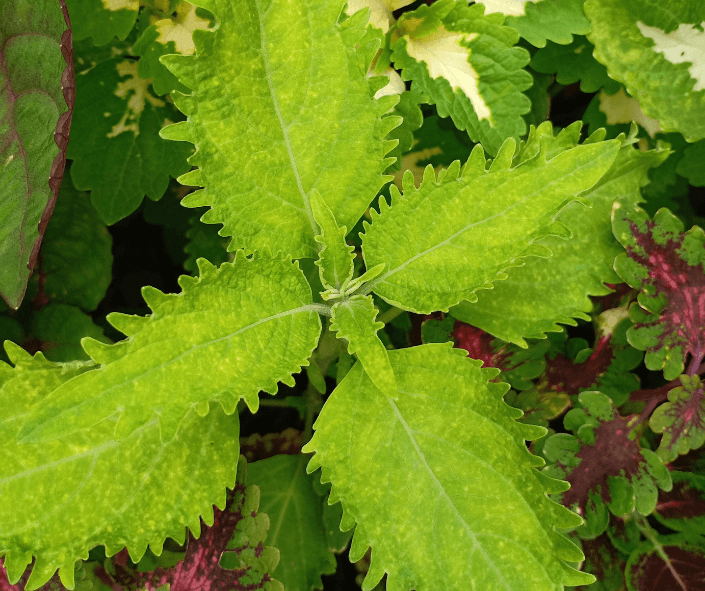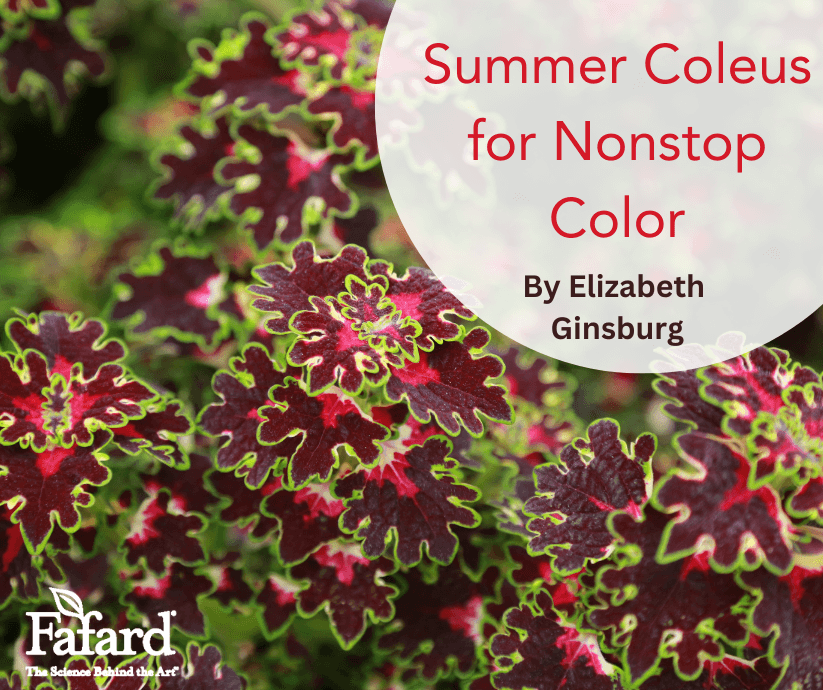
The old saying goes, “Call me anything you like, but don’t call me late for dinner.” For a long time, plant taxonomists and botanists have moved Coleus from genus to genus; the colorful plants have been botanically tagged as Coleus scutellarioiodes, Solensostemon scutellarioides, Coleus x hybrid, and Plectranthus scutellarioides. But, gardeners just call the plants “coleus”, or sometimes, “painted nettles”, and only call it for dinner when it is part of a cut flower and foliage arrangement.
Old-Fashioned Coleus for Summer Foliage
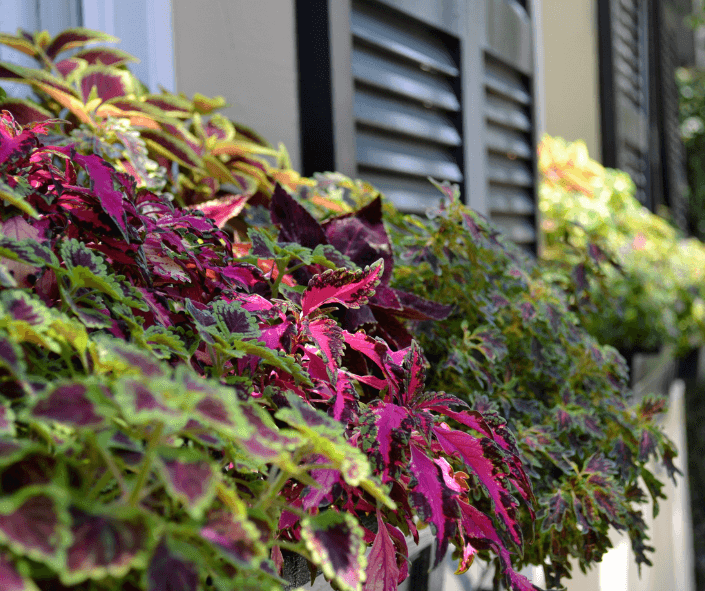
Long ago, the ancestors of coleus thrived in the tropical forests of Southeast Asia and Malaysia. Gardeners truly embraced coleus during the Victorian era. The straight-laced Victorians were anything but prudish about color in the garden. They lapped it up, which led to broad acceptance of coleus after its first appearance around 1850. Splashing around with leaves in every color but blue, coleus became indispensable in both parlors and gardens. Those indoor accommodations were, and still are necessary in cold winter climates, because coleus, which is a perennial in its native climate, cannot survive outside of USDA Plant Hardiness Zones 10-11.
With leaves in a multitude of shapes, colors, and patterns, coleus has long been a garden staple, beloved by anyone who has ever sought lightness and brightness in shaded spaces. Most celebrate it as a favorite summer foliage plant, showing up in borders, containers, window boxes, and public plantings all over North America and beyond. The species, which is part of the mint family (Lamiaceae) seems to transcend commercial barriers, dominating pallets in the biggest of big-box stores or the snootiest of specialty nurseries. This is quite an accomplishment for a plant that is both inexpensive and easy-to-grow.
Growing Shade-Loving Coleus
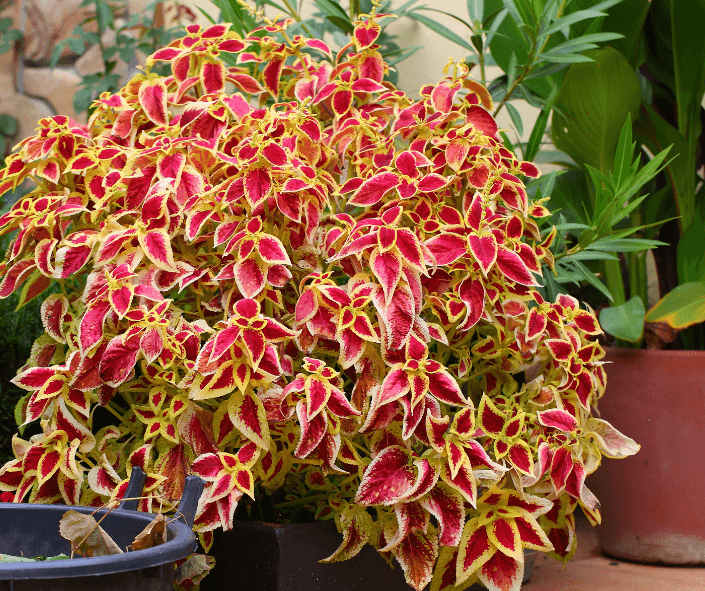
Like many mints, coleus—with intact flowers—will attract pollinators and generally repel garden varmints, like deer and rabbits. The plants grow readily and prefer light shade, which guarantees the best color. Consistent soil moisture makes for the happiest coleus and mulching helps the soil retain that moisture. We recommend Fafard Professional Potting Mix for potted coleus, and garden soil amended with Fafard Premium Natural & Organic Compost for coleus planted in ground.
Not all coleus grow to great heights, but many varieties get “leggy” as the growing season progresses, with longer stems and fewer leaves. The easy cure for this is pinching back the stems by about one-third (or two-thirds for plants that are way out of bounds) to induce bushier growth and a fuller appearance. Another trick is disabling the plants from flowering because when they flower their foliage loses color, density, and vivacity. Pinch back all flower buds before they bloom to keep plants looking their best.
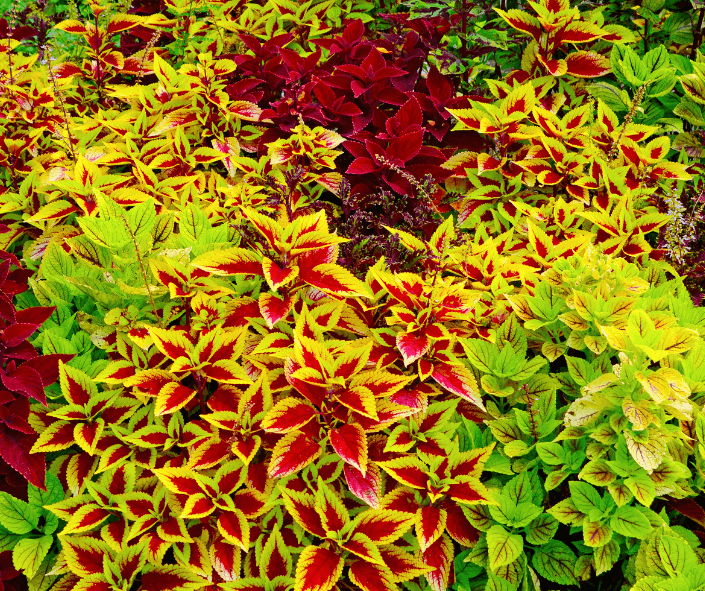
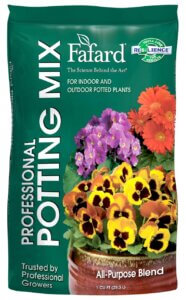 Bargain lovers relish the ease with which coleus can be propagated. A 6-inch cutting with leaves removed will root quickly in a glass of water and can be transplanted within a week or so. This is a great way to increase supplies of unusual or highly desirable varieties. If you can’t afford to buy flats of coleus to fill beds or containers, take cuttings from a few specimens and root them. You will fill the available space quickly and cheaply. When cold weather approaches, coleus can be potted up and brought inside, but it is sometimes easier to start new plants from fall cuttings that grow to maturity on sunny windowsills indoors. When spring rolls around, take fresh cuttings from the overwintered specimens.
Bargain lovers relish the ease with which coleus can be propagated. A 6-inch cutting with leaves removed will root quickly in a glass of water and can be transplanted within a week or so. This is a great way to increase supplies of unusual or highly desirable varieties. If you can’t afford to buy flats of coleus to fill beds or containers, take cuttings from a few specimens and root them. You will fill the available space quickly and cheaply. When cold weather approaches, coleus can be potted up and brought inside, but it is sometimes easier to start new plants from fall cuttings that grow to maturity on sunny windowsills indoors. When spring rolls around, take fresh cuttings from the overwintered specimens.
There is a coleus for almost every garden situation. The average coleus grows anywhere from 6 inches to 3 feet in height with an almost equal spread. Depending on the variety, the growth habit may be mounding or upright. Coleus can also be trained to grow as a small topiary, with a rounded ball of leaves atop a sturdy stem or several stems braided together. The colorful leaves are the plants’ main attractions, but they also produce slender flower spikes of tiny white or bluish blossom. Many gardeners snip these off, allowing the leaves to dominate the scene.
Choice Coleus Varieties
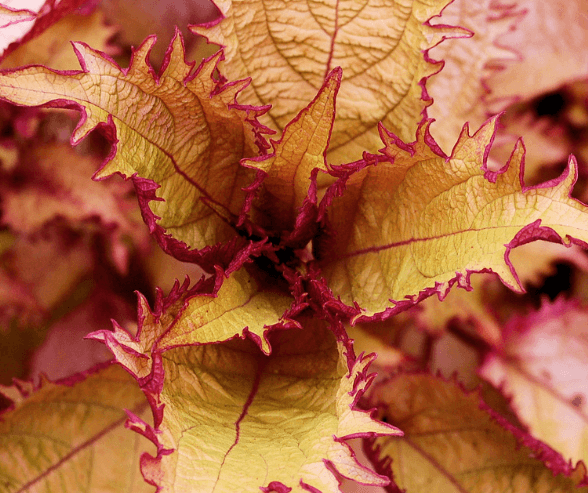
Hybridizers come out with new coleus introductions every year in a dizzying array of colors and styles. To set things on fire, try the aptly named ‘Inferno Red’ or the slightly darker ‘Oxblood’. You can pick cheerful chartreuse varieties, like ‘Electric Lime’, the equally limey ‘Wasabi’, or Proven Winner’s Lime Time. Each will add a bright splash of color to any porch container or shaded garden. The number of bi- and tri-colored varieties is almost infinite.
Leaf forms and textures are varied as well. ‘Inky Fingers’ features deeply dissected maroon leaves edged in lime green, while ‘Coral Candy’ is a sun-tolerant coleus with elongated and toothed foliage centered in coral and surrounded by wine-red borders narrowly edged in green. ‘Henna’ has fringed golden leaves edged in coppery shades and purple, and ‘Spun Glass’ boasts ovoid leaves that seem to ripple in lime green accented with near-black veins.
Coleus is a garden hero, making shady areas into colorful canvases that reflect individual gardeners’ aesthetic and horticultural sensibilities. The plants are also great companions for shade perennials like hostas and readily cover ground vacated by early spring bloomers like daffodils and tulips.
